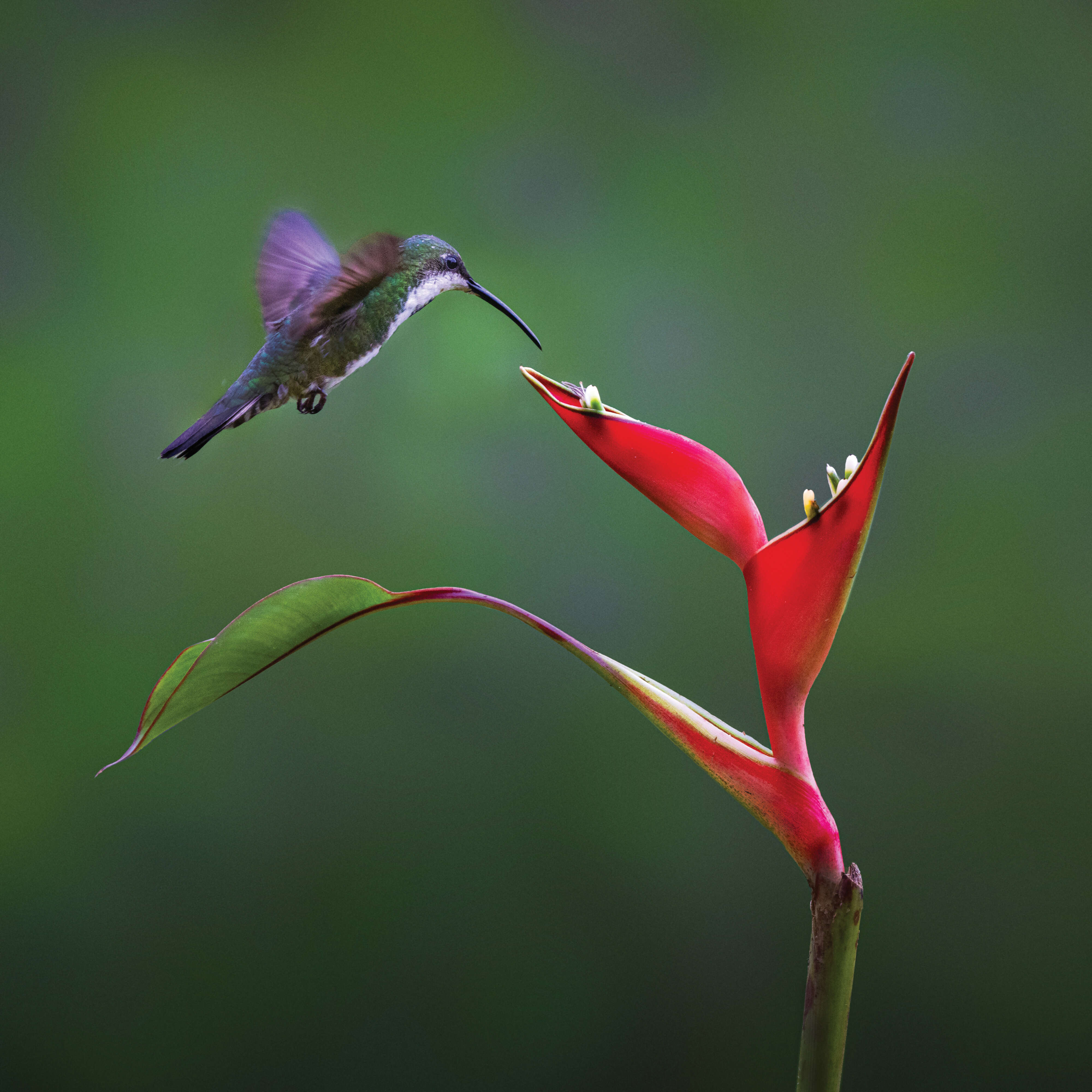
If you keep your eyes open in Costa Rica, there’s no end to what you might see.
As we wandered a well-traveled pathway one morning at Cahuita National Park in Caribe Sur-Puerto Viejo, our guide Fernando spotted a flash of yellow in a nearby tree. “Don’t move,” he said. “Let me take a look.” That bit of yellow was actually an Eyelash Palm viper, curled cozily on a tree branch. Beautiful but perhaps a wee bit deadly, he was just the first of the many wildlife encounters we would have with Fernando as we explored his beautiful country. Costa Rica is a real-life Jumanji, a place exploding with more than 500,000 different species – five percent of the world’s total in a relatively small geographic area, making it one of the most biodiverse countries in the world – a gloriously green patch of the globe. Eager to see as much wildlife as possible, we’d planned an itinerary that took us far from the better-known Guanacaste province and into the nature reserves of central Costa Rica and its Caribbean coast. And we loved every minute.
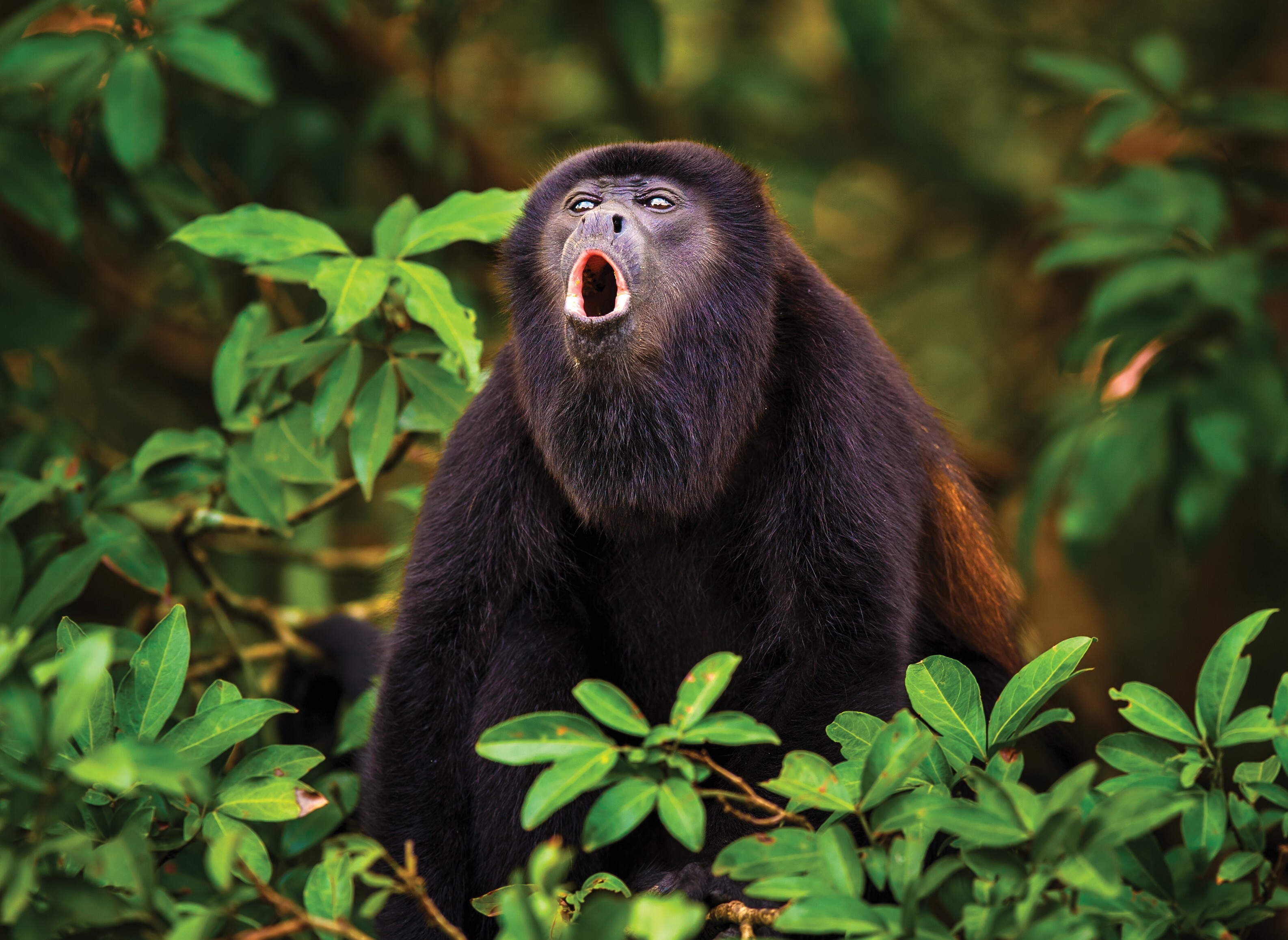
In addition to our enthusiastic guide Fernando, we were accompanied by our driver Giovanni, whose lack of English was more than compensated for by his confident knowledge of the windy roads that took us into the cloud and rainforests. Each day was an adventure. Outside the Hotel Buena Vista Chic in Alajuela, a pair of sloths lolled in the trees overhead, smiling down at us whenever we left our room. Fabulously cooperative for photographers, sloths stay put for long periods – no need for a hair-trigger on your phone or camera. In fact, we learned that many sloths stay in the same position, in the same tree for a week at a time, only climbing slowly down to answer the call of nature. Once relieved, they slothfully return to their place for another week. (If you’re thinking they might make the perfect pet, think again. They’re a protected species.) Far more active, but no less fascinating were the troops of Howler monkeys we encountered one hot morning. Large and black, Howlers swing through the trees with Tarzan- like grace, barking loudly. The troop we saw was comprised of a mother and several babies, who dangled heartstoppingly from branches that seemed far too delicate to bear their weight. Though we fretted a bit on the ground below, Mama Howler seemed unconcerned. It was only when we moved closer that she began to bark, prompting Fernando to herd us back onto the path. Apparently, Howler watchers ignore those warning barks at their peril. Get too close, Fernando explained, and you might be hit with Howler poop!
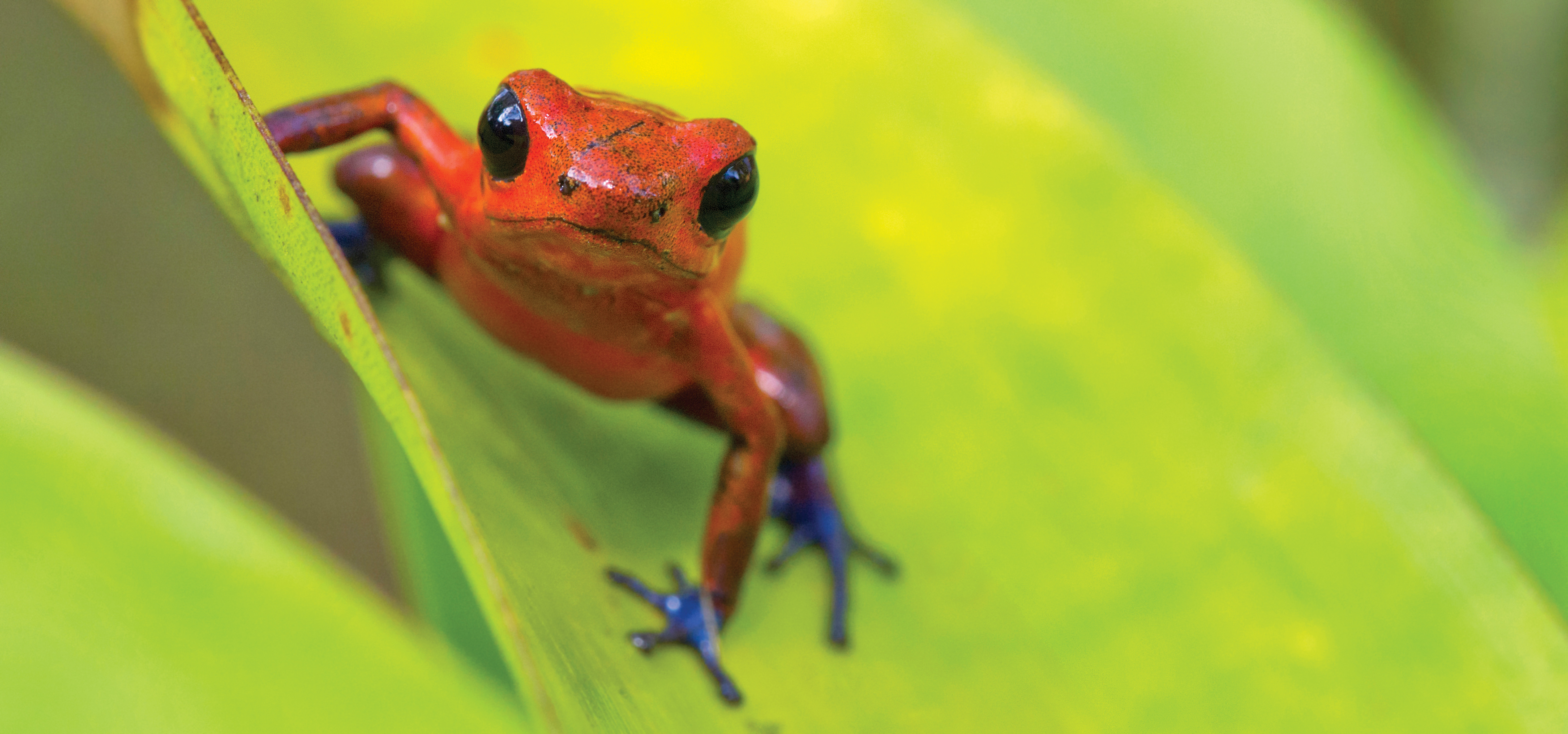
Some of the most fascinating creatures we encountered were among the smallest. In the Trimbina Rainforest Park, one wet afternoon, we heard loud croaking, only to find it coming from a surprisingly tiny, bright red frog with dark blue legs. The Strawberry Poison Dart frog is no bigger than the first joint of my thumb and spends its life tucked snugly into thatches of damp rainforest leaves. Though harmless itself, that frog has a dangerous taste for a particularly poisonous ant that it gobbles in quantity. Weirdly, the poison ingested doesn’t do any harm. It’s excreted through the pores of the little frog’s skin, making him deadly to any animal – or unlucky human – who might pick him up. Equally fascinating are the bullet ants that build their nests near rotting trees. Though tiny, the bites of these little creatures pack an incredible punch. In fact, it’s considered a test of courage by some local men to allow yourself to be bitten by a few, to gauge your ability to withstand pain! (Note: this seems to be a testosterone- fueled activity. We heard of no women attempting this stunt!)
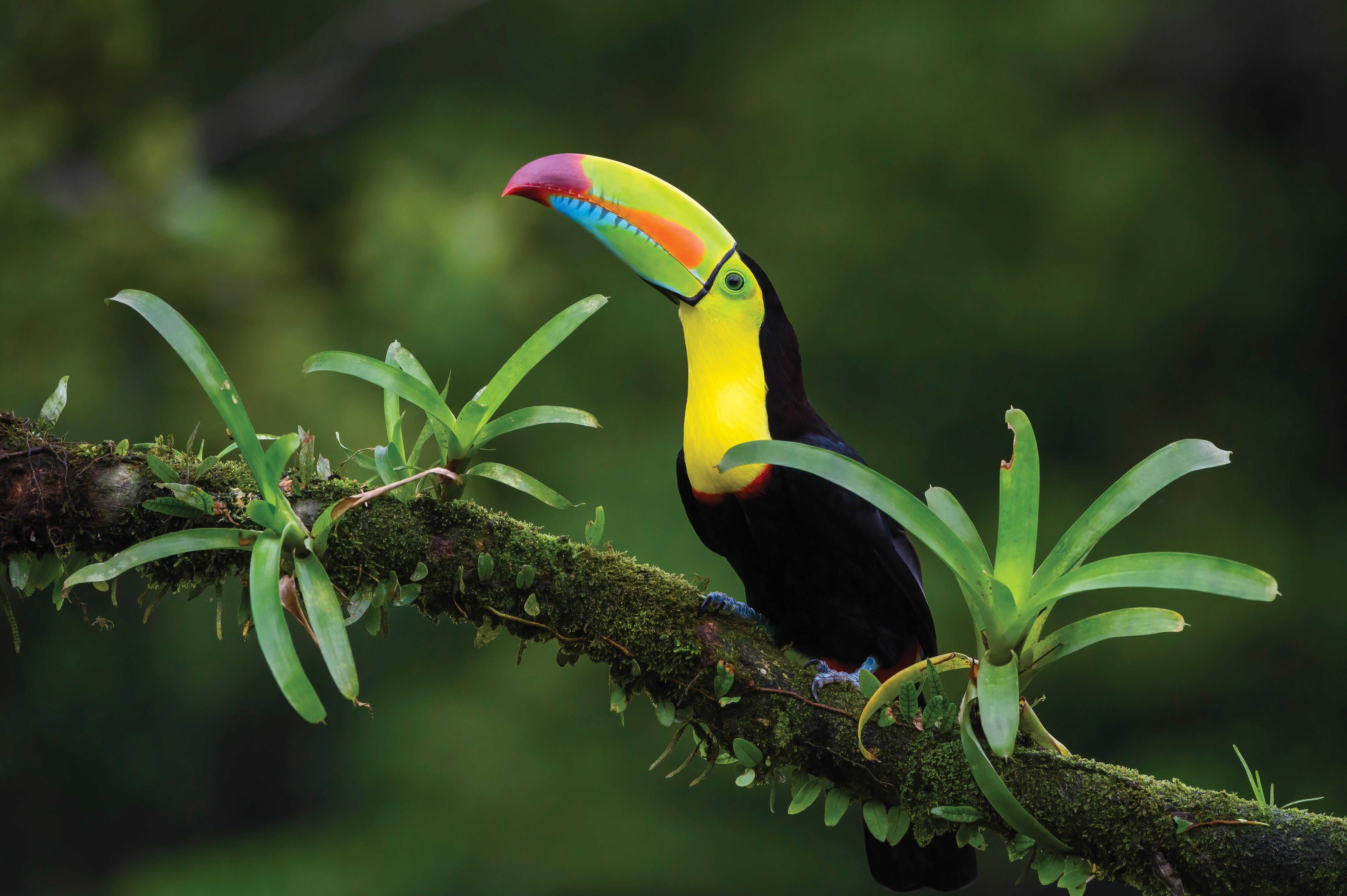
But lest you think Costa Rica is nothing more than a fright factory of dangers, look up into the trees and the sky beyond, where you’ll see gorgeous birds of every shape, size and shade. Rainbow coloured toucans, with their long, curved beaks share the air with rare and stunning sunbitterns, quetzels, scarlet macaws and other beauties. Tiny jewel-like hummingbirds §it from one bright bloom to the next in a swirl of whirring colour. Equally gem-like are the various lizards that skitter haphazardly across the warm stone walkways. Costa Rica’s beauty is on display all day and all night. Stay in an eco-lodge as we did and fall asleep to the sound of a waterfall just beyond your balcony.
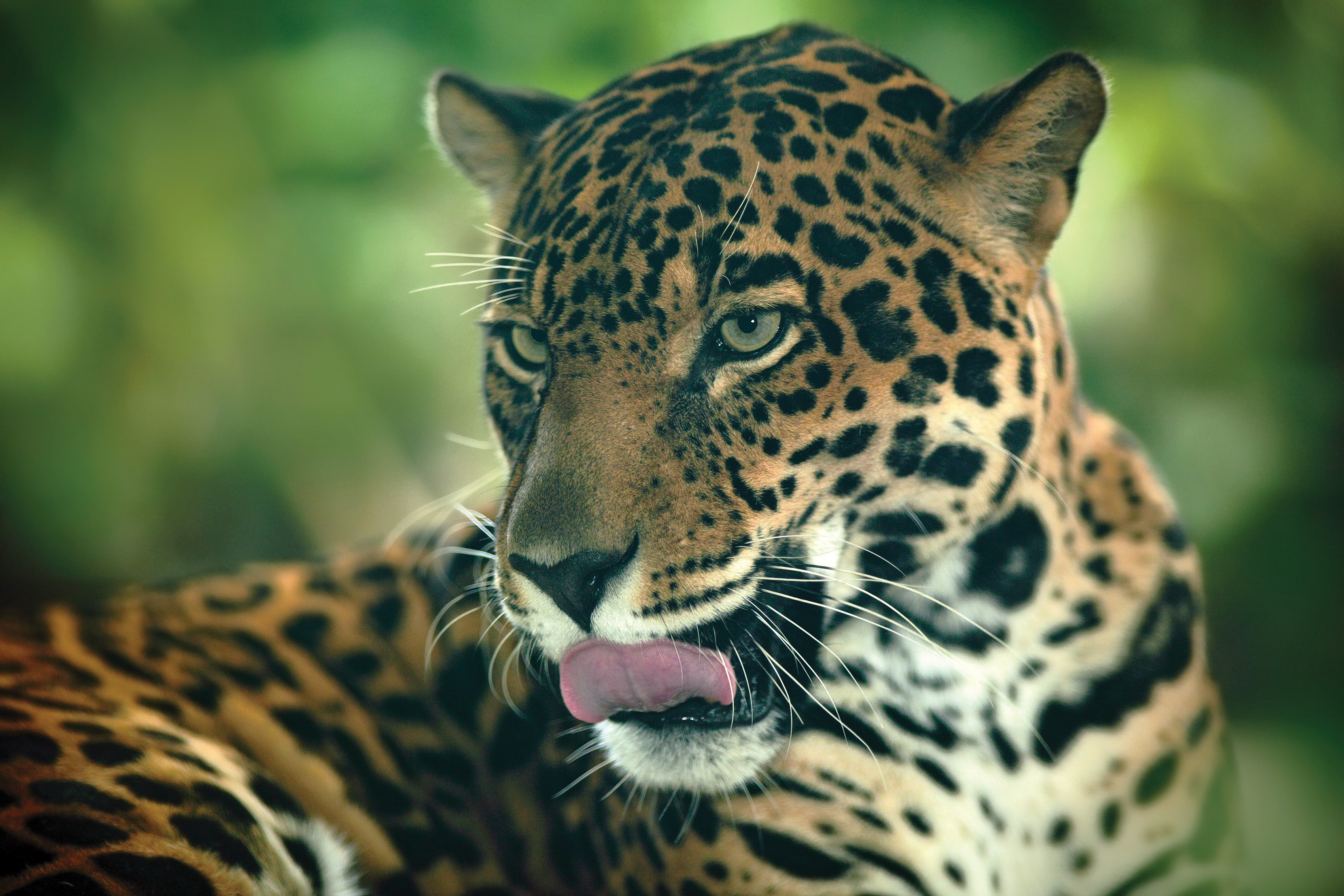
Wake in the morning to a chirping, cheeping, squawking choir of birds so insistent, you’ll have to grab some binoculars and head outside to see who’s come calling. Nowhere will you find a more fascinating opportunity to learn about the flora and fauna of the country – and the efforts being taken to preserve it – than at the Jaguar Rescue Centre in Limón, a sprawling sanctuary dedicated to saving, caring for and housing injured creatures until they return to the wild. A visit offers a unique education. Snakes, crocodiles, capuchin monkeys, birds of all kinds, giant iguanas, sloths, and the ever-present agouti – Costa Rica’s answer to the guinea pig, but much larger and cuter – and dozens of other creatures are housed in pens or simply wandering the grounds. Caregivers also wander, bringing necessary medications, water and food from an onsite kitchen filled with the favourite fruit and veggies of the residents. Every corner of the property is fascinating but the best spot by far is the nursery where we found a days-old baby sloth and an equally tiny anteater. To minimize human contact and facilitate their re-entry into the forest, we could neither touch nor photograph them so instead stared through a glass at their tiny, furry perfection. We memorized every detail of their little faces – the smile of the sloth and the long, furry anteater nose – and we think of them often, symbols of the wild wonder that is Costa Rica.
Written by Liz Fleming for Cruise and Travel Lifestyles (Fall 2025)
Popular Articles & Videos
- Video: Meet the Wine Maker in the 'Tuscany of Austria' on the Danube
- You Need This Suitcase For Your Next Trip to Wine Country
- 3 New, Impossibly Picturesque Boutique Hotels That Make it Easy to Dream About Your Next Trip to Europe
- Cruising with History on Sea Cloud
- Video: Alaska Wildlife Encounters You Can't Miss






